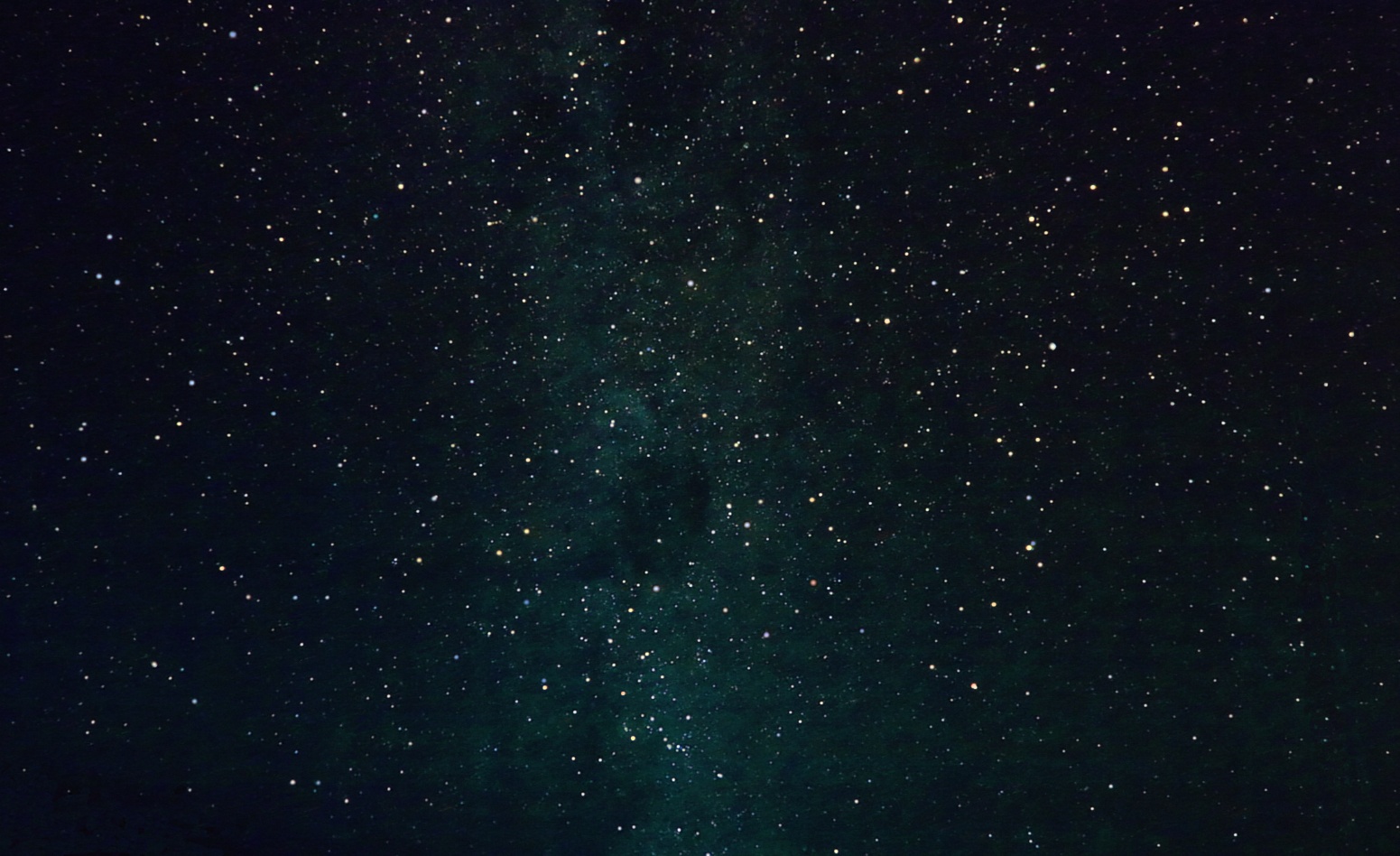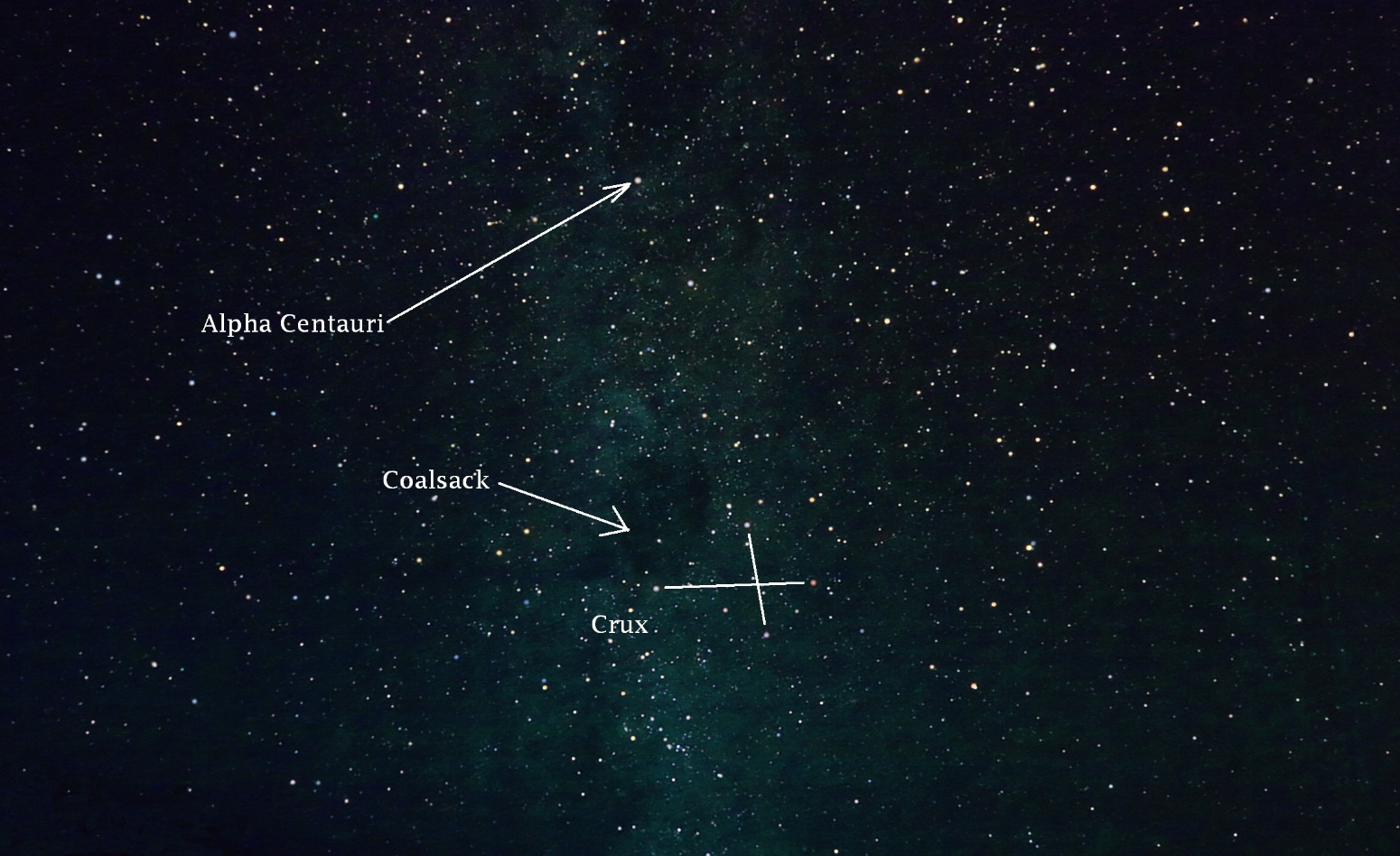
The constellation Crux is commonly known as the Southern Cross. It lies in a splendid area of the Milky Way filled with beautiful star clusters and nebulae, but is only visible from locations south of at least about 20 degrees north latitude, (the approximate latitude of Hawaii). At a dark sky location, the number of stars that are visible can sometimes make it difficult to pick out the constellations, even something as easily recognizable as the Southern Cross. This image taken under exceptionally dark skies at Lake Titicaca in Bolivia shows how constellations can sometimes become lost in a sea of millions of stellar points of light. An annotated copy of the image appears below.
The coalsack is a dark nebula that appears as a starless, irregular form against the backdrop of a myriad of faint stars in the Milky Way. Not every nebula is seen as a glowing cloud of ionized gas or is illuminated by reflected light from a nearby star. A dark nebula that may be seen by virtue of the fact that the cloud of gas and dust forming the nebula blocks the light from stars in the background. Other examples of dark nebulae include B263 in Scorpius, B86 in Sagittarius, and the Great Rift in Cygnus.
Alpha Centauri is the closest star to our solar system that is visible to the naked eye. It is actually a triple star system, and one of the dim members of the Alpha Centauri system, known as Proxima Centauri, is slightly nearer. The distance to this multiple star system is slightly more than 4 light-years. Alpha Centauri is the third brightest star in the sky. It has the greatest known parallax and largest proper motion of all first magnitude stars. Alpha Centauri is also known as Rigel Kentaurus. If we were on a planet orbiting Alpha Centauris, our sun would appear as a first magnitude star just a few degrees from the Perseus Double Cluster. Proxima Centauri is so dim, however, that is it were put in the place of the sun, it would only put out light equivalent to about 45 full moons as seen from earth.
This image was taken with a Canon EOS Digital Rebel SLR camera using a 35mm lens.

August 30, 2005
Image by Sid Leach
Lake Titicaca, Bolivia
Recent Images.
Complete list of images.
Description of equipment used to acquire images.
Home
Feedback and comments should go to Sid